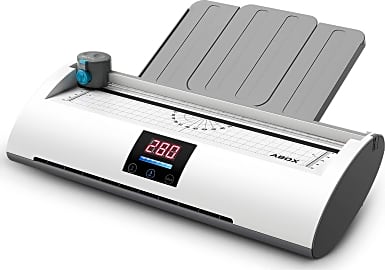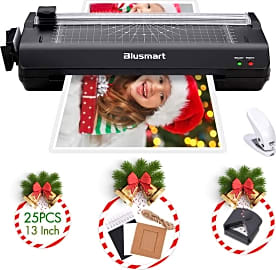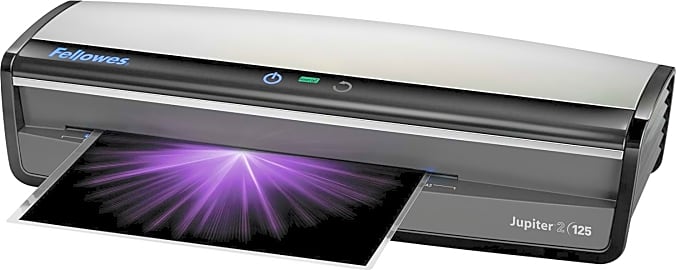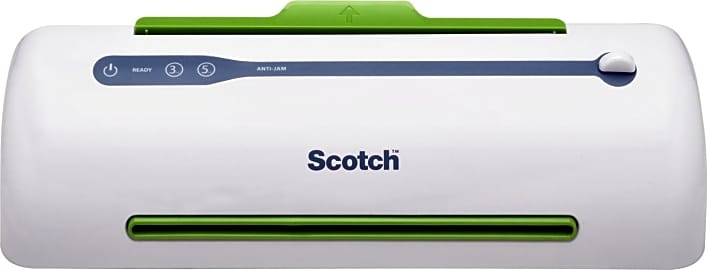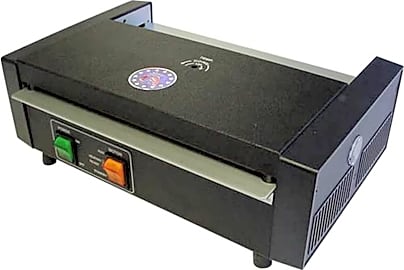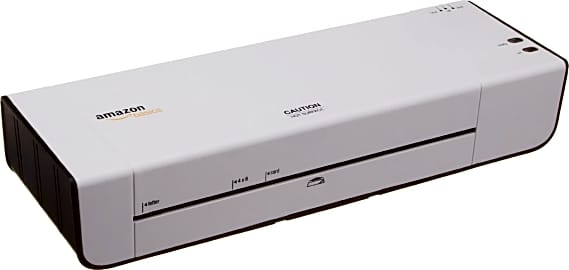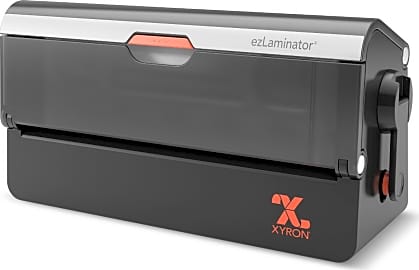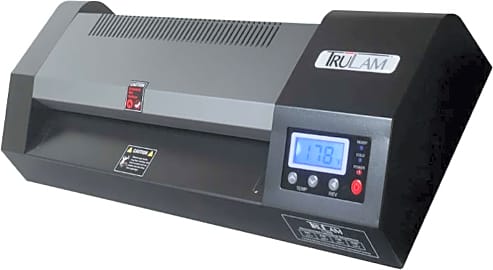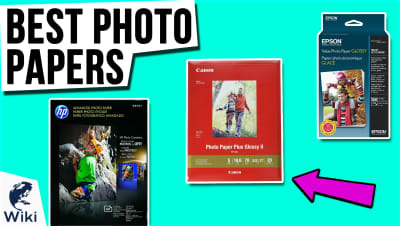The 10 Best Laminators

This wiki has been updated 44 times since it was first published in April of 2015. From ID cards to menus or posters, these easy-to-use laminators apply a thin plastic layer over the surface to protect documents from damage and spills. We've selected budget models suitable for home use as well as machines that can handle the workload of a busy office, so you're sure to find one that meets your needs, whether that includes hot pouches, cold, or both. When users buy our independently chosen editorial picks, we may earn commissions to help fund the Wiki.
Editor's Notes
January 21, 2021:
Whether you are looking for an industrial-strength laminator such as the TruLam TL-320E or a simple option for home use like the Scotch Pro TL906, the size of the material you want to laminate is the first consideration, as some only have a nine-inch feed that is just wide enough for A4 paper, whereas others are larger at 13 inches, and can accept the A3 format.
In this update to the ranking, we switched the Blusmart OL288 with the updated Blusmart 13 inches. This wider model can now laminate media up to A3 in size, and comes with a six-piece accessory kit that includes 25 laminating pouches, 10 photo frames, and 3 book rings. The Abox Pixseal Ⅱ, which is notable for its infeed tray that should reduce issues such as wrinkling or jamming, features touchscreen controls and a digital temperature display. Lastly, the American-made TLC 7000T is a good choice for heavy workloads thanks to its durable metal construction, adjustable temperature control, and 10-millimeter thick capacity.
December 24, 2019:
There are two directions you can go when looking for a good laminator. If you'll be sticking to small jobs on small documents like standard printer paper or small photos, the Blusmart OL288 is a good choice in part because it includes a corner rounder and cutter, and it's one of the least expensive options, as well. The Crenova BLM00029 and Scotch Pro TL906 are similarly affordable, and the Amazon Basics PL9-US even more so, and as long as you don't need any fancy features or the ability to work with oversize pages, they should work just fine.
Models such as the TruLam TL-320E warm up very quickly and can stand up to particularly heavy use, while the Apache AL18P is notable due to its relatively large maximum width and its reasonable price tag. The ProLam Ultra-X Akiles XL, in contrast, is rather expensive, but is one of the most technologically complete models, boasting a total of 10 rollers that deliver quick and consistent results.
The Xyron EZLaminator 624672 is particularly interesting because it works on a hand crank, but that does mean it's not ideal for high-volume jobs, as you might just get tired before you're finished. And for overall cost-effectiveness for jobs of varying sizes, it's hard to beat the Fellowes Jupiter 2 and Fellowes Saturn3i 125. Depending on your needs, these are two of the most capable models that won't require you to shell out an absolute fortune.
Special Honors
Royal Sovereign If you need large-format graphics finishing, look to this manufacturer of industrial-grade machines. You'll want to explore their offerings and possibly even contact them to make sure you're making the right purchase for your needs, but they do offer something for the most demanding artists and signage producers. royalsovereign.com
Pro-Lam Machines As their name implies, Pro-Lam makes several laminating machines suitable for professional use. Their Series II ranges from 12 to 44 inches wide, and for such capable devices, they actually claim to be relatively affordable. pro-lam.com
Ledco Laminator With some of the largest and most powerful models on the market, Ledco can supply nearly any organization with the hardware they need to weatherproof small to large documents and preserve them from the ravages of time. Because they have so many different solutions, your best bet is probably to get in touch with them and see which model is right for your needs. ledcolaminator.com
Protecting Memories And Information
By contrast, a cold laminator is ideal for materials that may be more sensitive or prone to damage by heat.
Paper is considered a fragile item, depending on how thick it is. It can rip, tear, burn and scratch easily. Imagine that you've just brought home a few years' worth of precious family photos developed from the film in your camera. You set them on the table and accidentally spill water all over the surface of the table, which soaks right into the photos. Unfortunately, the photographs will never look the same again. Wouldn't it be nice to have a device that could protect these and other vulnerable paper products from accidents like this? Whether the intention is to preserve memories, protect documents, or make them attractive for advertising, a laminator will be needed to get the job done.
Lamination refers to a technique through which a composite material is produced in layers for improved strength, appearance, durability, or insulation. The product of this technique is referred to as a laminate, which is created as a result of heat, pressure, and adhesives. Laminate materials will vary depending on the object. When laminating a poster, for example, sheets of clear plastic film can be used on either side of the poster to increase its strength and protect it from damage. Materials like glass, used to construct car windshields, are also laminated with a heavy plastic film sandwiched between two layers of glass. This protects the driver from shattering in the event of an accident. Our primary focus is on paper laminators.
Laminator machines are either hot or cold and leverage differently-sized pouches made from plastic film with special adhesives for binding to the materials placed inside them. Hot laminators are the most common with heated plates or rollers through which the pouches are fed. These pouches are sealed on one side and feature heat-activated adhesives that bond to the materials being laminated as they are fed through the machine. The pouches are sometimes stored in a protective card stock that prevents direct contact with the hot rollers inside the machine. By contrast, a cold laminator is ideal for materials that may be more sensitive or prone to damage by heat. Cold pouch laminators leverage the pressure from their rollers to activate the adhesive inside the pouch. This can even be accomplished without electricity using a turn-style crank to feed the pouch and material through the machine.
Laminators And Legacy
Although the process of lamination for insulating existed as early as the mid-1800s, paper laminators became more popular by the 1930s for archival purposes to strengthen fragile documents. Among the first organizations to embrace this process were the United States National Archives and Library of Congress due to their size and large budgets. The process involved de-acidifying a document, layering it between tissue and thin sheets of plastic, and fusing those elements together in a heated press.
Those businesses lacking the resources, money, and equipment to laminate their documents often turned to these large organizations for their needs.
Those businesses lacking the resources, money, and equipment to laminate their documents often turned to these large organizations for their needs. The process was eventually considered a panacea (or major solution) to all prior issues related to the fragility of paper with respect to archiving and preservation.
Along with the continued development of the lamination process throughout the twentieth century came a series of inventors for refining the technology. American chemist William Barrow developed both an effective means of de-acidifying paper as well as the first practical roller-type laminator in which brittle documents were laminated between tissue and cellulose acetate film. Barrow was considered one of the most important contributors to the achievement of permanence and durability with archival materials still used today.
Choosing A Laminator Wisely
What are some of the most practical applications for a laminator? For a business or office setting, it prepares a variety of materials, including business cards, signs, and posters. The lamination process can make a poster advertisement stick out and draw attention from customers or colleagues. It also makes the material appear more professional than it would look by itself coming from a conventional color laser printer.
Different types of office settings and documents will require a variety of needs, so the machine must be able to support them.
Lamination is ideal for archiving information, both for security and posterity. It's a given to laminate photos or identification cards for preservation, but the process also lends itself well to maps and continuing education material for teaching purposes. Laminating a map, for example, means that it can be used over and over by many students without being lost or damaged. The text is also easy to read.
When choosing a laminator, one must determine its application and the volume of work that may need to be fed through the machine. Different types of office settings and documents will require a variety of needs, so the machine must be able to support them. For example, if one's business laminates many large posters or documents for presentations, then a large consideration should be the size of the rollers or plates used, the thickness of the machine, and the sensitivity of the documents requiring this technology.
If you're dealing with a lot of delicate content that is intended for archiving, then a cold laminator may be a good choice so there is no risk of damaging the materials. By contrast, if your intention is to laminate a lot of small materials quickly and constantly, then a hot laminator will do the trick.
The best laminators feature interactive user displays for easy adjustments and audible alerts to let you know a job is complete.
One must also ensure the laminator's rollers and motor are durable enough to run materials through the throat of the unit without jamming, which is particularly important for busy office and school environments requiring constant use of the device.


